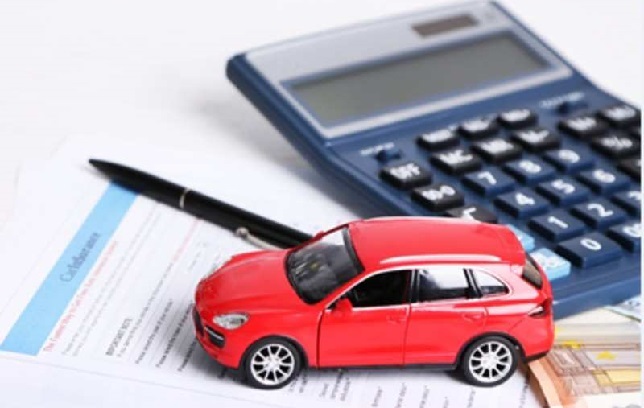Telematics: A Silver Lining for Motor Insurance industry in India

Motor insurance in India has been undergoing remarkable changes in the recent past, thanks to increasing insurance awareness, emergence and adaption of tech-solutions and optimistic regulatory approach, which are proving helpful for serving both – Insurers and Customers. After considerable buzz in the insurance market, Motor insurers are seen evaluating and adopting telematics and UBI programs at a promising pace.
Achieving significant profitability with LOB like Motor Insurance which is considered to be the ‘bread and butter’ for insurance companies (contributing to ~55% of total retail portfolio); is still a challenge. Telematics propositions can play a vital role here and can be a potential game-changer for the Motor insurance market in India by allowing insurers to decrease reliance on traditional operating modules, incorporating real-time & sophisticated pricing and underwriting practises to accurately measure the risk.
2.What is Telematics:
Telematics is a communication technology that can store, send and receive information to and from vehicles via wireless networks. It is an amalgamation of communications, location and in-vehicle electronics technology upgrading the automobile industry towards the robotics age.
Vehicle telematics systems facilitate the exchange of information between a central software, a database/Cloud and individual vehicles.
3.Global Trends VS Indian Market:
The global insurance telematics market size was predicted to reach over USD 1.9 billion in 2020 and projected to grow at a CAGR of ~20% over the forecast period. The market is expected to be driven by an increase in the number of laws and regulations relating to driver safety, as well as lower connection solution costs. Technological advancements in the vehicle insurance market, aided by the integration of telematics technology, are hastening market growth. In addition, insurance telematics and Usage Based Insurance (UBI) have carved out a niche in the global general insurance industry.
Indian Insurance market is in the early evaluation phase and is taking baby steps towards adopting this Gen-Next product. Regulator is allowing Insurers to file these products under its pilot regime ‘Use and file’ wherein Insurer is allowed to use the product for specified short span or up to achievement of targeted business figures. Results for the pilot proposition are then evaluated by both Insurer and the regulator for future enhancements. Few Insurers in India have already launched telematics propositions which are new, innovative and consumer friendly. Many Car manufacturers in India are eyeing for higher penetration of Connected vehicles that are pre-fitted with Telematics solutions. Customers are understanding the importance of these products especially after the pandemic where vehicle usage was restricted and customers had to pay a premium for the entire year.
4.How does this technology work:
This Technology works in 5 Phases as below:
These are however broad phases in the entire process. Stakeholders add some more processes/filters as per their requirements.
5.Current Technology in Indian Market.
Telematics in Insurance can be leveraged through 4 technologies:
1.OBD based:
These are devices that fit into OBD port in a vehicle allowing the user to monitor and retrieve critical vehicular data (like vehicle speed, fuel system status, emissions, engine performance, mileage, etc). Customers can self-install devices via on-board diagnostic port (OBD). These telematics devices are cost efficient, lightweight, compact and very easy to install in a vehicle. They are comprised of low power processors and chipsets, working on Wifi or 3G /4G networks. These devices transmit in-vehicle data to the parent database which is further processed and utilized by relevant stakeholders. The processed telematics data can be in the form of vehicle location, time, speed, idle time, route, etc. and helps in monitoring vehicles diagnostics data, which can be used for preventive maintenance of the vehicle. These devices being smaller in size are not easily visible. So in case of theft of a vehicle the chance of device tampering is minimal.
Sometimes, users need to replace telematics devices from one vehicle to another. In this case, plug and play telematics devices give complete flexibility to reinstall or interchange with devices of other compatible vehicles
2.App Based:
Use of smartphones and custom mobile applications for telematics solutions are very popular. Smartphones are the most acceptable medium of adapting a telematics solution, as they provide a convenient, easily accessible, and cost effective solution. The latest smartphones are equipped with a highly precise global-positioning system (GPS) receiver and the custom telematics applications offer a variety of services for capturing, storing & processing real-time vehicular data. The mobile apps receive vehicular data via Bluetooth enabled in-vehicle sensors and provide customized vehicle tracking options as per user convenience.
Whilst smartphone telematics are an affordable and effective telematics medium, they are vulnerable to deliberate frauds by the driver/users, as smartphones can be mishandled to misguide the telematics system.
3. BLACK BOX based:
This is the most traditional Telematics solution used especially for fleet tracking and monitoring. A fixed electronic device securely mounted inside the vehicle ensures that accurate trip and collision data is obtained and transmitted to a database. Popularity of this approach is high in regions where vehicle theft is rampant, offering a proven, tamper-resistant method for prompt recovery of stolen vehicles.
However, these aftermarket devices must be professionally installed in vehicles, leading to higher installation costs.
4. OEM EMBEDDED:
This technology comprises built-in/pre-fitted Vehicle telematics. Vehicles that are originally fitted with telematics technology/Devices by vehicle manufacturers form a part of this cluster. The new generation of connected vehicles that capture, store and process driving data best fit into this techno-family. Data extracted directly from built-in vehicle sensors eliminates aftermarket installation costs, but a lack of standardization among OEMs has impeded market acceptance.
Additional Features:
1.Location Tracking and Notification:
This feature enables the customer to Real-time Track Location status, speed of vehicle, detailed trip history and accurate driving path, set places of interest (such as your Home, Work) and get alerts when vehicle reaches predefined location.
2.Geo-Fencing:
Customers can set up a geo-fence for their vehicle and get notified when the vehicle enters or exits it. This is a very useful feature for customers whose vehicle is driven by multiple people especially if it’s a driver driven vehicle.
3. Recommendations on Driving Behaviour and Traffic Hygiene:
By providing real time Driving statistics in the form of Interactive dashboards; this feature helps the driver to know his driving patterns and pushes recommendations to improve the same. As a big picture; this also helps in maintaining a better and improved Traffic hygiene.
4. Anti-Theft Alerts:
This feature enables the customer to set an alarm during a specified time while the vehicle is stationary. If there is an event of theft or break-in; the customer is notified immediately about a probable event.
5.Other Key Notifications and Alerts:
The customer can also receive customized alerts like Insurance renewal reminders; Car servicing due dates; Monthly fuel usage; Low battery Voltage; Engine overheating and other vehicle diagnostics.
6.Importance of Telematics in Indian Insurance Market:
Indian Motor Insurance market is highly price sensitive and has been facing challenges to maintain a profitable portfolio. Whilst insurers are charging a rate as low as ~1-1.5% of Sum Insured (on an average); additional costs like partner acquisition costs, Commissions and expenses make it difficult for insurers to decide on an accurate premium that would ensure profitable underwriting book as well customer satisfaction. Technological advancements like Telematics can help Insurers adapt more sophisticated pricing techniques that utilize customer driving behaviour and driving conditions to derive optimized/promising premium. Also this generation of techno-products attract retail consumers faster as they charge customers only on the basis of their usage and also provide additional features that help customers maintain a better driving hygiene.(like vital vehicle statistics, nearby Garage information, Geo fencing).
Another challenge for the Motor Insurance market in India is the rising incidence of Theft/Total Loss claims. Telematics can effectively help minimize or real-time track and recover the Theft events and save the insurer ~5% of its total claim amount a year.
7.How does it benefit both Insurer as well as the customer:
Telematics can provide a one stop solution for both- Insurer as well as Consumer. Insurers can see this technology as a solution to achieve a single point agenda of ensuring Profitable growth through accurate pricing mechanism and decline in Theft events.
In addition to charging optimal premium; Telematics provides customer with a holistic proposition that enables the customer to utilize additional information associated with driving activities like vehicle diagnostics, Daily Traffic alerts on frequent routes, Nearest garage/Fuel station Locations, tracking of vehicle while parked in an unknown area and many more embedded in one single platform/App.
8.Other stakeholders benefiting from Telematics: (RTA, car OEMs, Service stations;Police etc)
- Car Manufacturers:
OEM Embedded/pre-fitted telematics technology could open hidden doors of opportunities for the Car OEMs to achieve deeper customer engagement, cross sell and Enhanced customer safety through this technology in real-time. A bigger goal could be data capturing and monetization that OEMs could eye for.
- Road Transport Authority:
A study says ~30% of the road accidents in India turn fatal because they are not reported on time. India ranks 1st in number of persons killed in road accidents across the 199 countries reported in the World Road Statistics, 2018.Considering diverse Geographical conditions, Road safety and Traffic hygiene in India; RTAs are facing challenges to monitor and curb fatal accidents. Telematics solutions provide real-time intimations and signals that indicate vehicle breakdown. These, if integrated with relevant systems of RTAs could make the ecosystem simpler and more effective. Under new corrective measures conducted by MORTH (Ministry of road transport and highways); Location tracking devices and emergency buttons are made mandatory in all Passenger carrying vehicles including e-rickshaws and three wheelers.
- Service stations:
In the event of vehicle Breakdown; Customers usually are left alone to pull their vehicles to nearby garages and service stations. Telematics solutions come with a front end platform/app which can include a list of preferred garages. Customers in the event of calamity can approach these garages through embedded apps just on a click and get the job done.
9. Initial Challenges:
- Cost Management:
Indian market being highly price sensitive; cost of Telematics solution might prove expensive further adding to the issue of cost management. Even the basic Telematics solution is expected to add ~15% of additional loading on existing premium. This would either increase the premium for the end customer or the company would have to bear these costs. In any case if not managed properly, these propositions might result in lower usage or penetration.
- Data Privacy Issues:
Telematics is predominantly a data driven solution. It captures vital customer data related to driving behaviour, Location, demography etc. Customers might have a reservation sharing this data as there is a high chance that the stakeholders might use this data to their benefit. End customer should be educated and made fully aware of this solution and its usage.
- Initial Reluctance in adaption:
Telematics technology is new to the Indian market and is yet to achieve customer trust. Customers and car OEMs are initially reluctant to install a device or use a connected smartphone that captures their data and in a way monitors them. Lack of Awareness and misconceptions about an external device impacting the vehicle health may prove fatal for significant penetration of this solution in Indian market.
- Limited Resources/Talent:
Indian Motor Insurance market is still maturing and trying to benchmark with its European counterparts. Though Indian market is responding impressively and adopting technological advancements at a very fast pace; it is still facing the issue of lack of talent in this area. The market needs exceptionally skilled IT, Insurance and Data professionals to leverage this kind of solution and make it a success story.
10. Way ahead:
- Hybrid Business Model:
The best possible business model could be a Hybrid model (Insurance+Technology) that offers pre-fitted /OEM embedded Telematics technology combined with Data driven Insurance pricing. It can save insurers excess cost of installation; offer car OEMs additional business opportunity and provide customers with an end to end hassle free and one-point solution.
- Customer Awareness:
Awareness on Telematics solutions and Technological advancements amongst retail customers will play a pivotal role in the success of Telematics propositions. This would require equal efforts from all stakeholders (Insurers, Regulator, RTAs,OEMs etc).
- Assistance from Regulator:
Whilst regulators are working optimistically towards adapting Technological advancements in the traditional Indian market; few significant steps/decisions are yet to be initiated. A constructive roadmap with well-defined rules and regulations, Streamlined processes for data management and guiding Insurers to best serve the end customer are some of the key areas that if worked upon could make Telematics solution a big success in Indian market.
Author:

Chinmay Shyam Dixit
Post Graduate in Applied Statistics; has been Working in the General insurance industry for the past 8+ years. Expertise in Analytics and ML as core domain. Has been in an Analytics leadership position serving key areas of Underwriting, Claims, Strategy, Reinsurance, Product Development and operations.
Published in Telematics Wire




